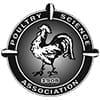Explore all the information on
Genomic selection in poultry
Genomic selection is a recent paradigm shift for animal breeding. The availability of hundreds of thousands of markers covering the entire genome has provided an opportunity to increase the accuracy of estimated breeding values, better manage genetic variation and shorten generation intervals. The development of technology enables more accurate and efficient selection of breeding animals. This is particularly relevant for poultry, for which short generation intervals and relatively large populations allow rapid genetic progress. Over recent decades, we have seen implementation of increasingly complex and computationaly demanding statistical approaches to assess the genetic value of an individual using phenotypic and pedigree information. With the availability of genome sequence and the development of single nucleotide polymorphism (SNP) DNA marker chips, further improvements can be achieved. Over the last 50 years, genetic selection in poultry has proven to be extremely successful.
Jonathan Cade, President of Hy-Line International, shares how the company has developed a new egg layer variety tailored to India’s climate, market needs, and production systems. He also speaks about Hy-Line’s commitment to support India’s rapidly evolving layer industry with genetics built for long-term success.
...
Comments : 0
Recommendations: 0
Thomas Dixon (Hy-Line) discusses the cost and price increase that comes with this change, and how to adapt to it, during the Avicolas and Porcinos event in Buenos Aires, Argentina....
Comments : 1
Recommendations: 0
Janet Fulton, Hy-Line Senior Molecular Geneticist [Retired], explains her research on chicken candidate genes associated with survival following an HPAI Infection, in this Engormix interview....
Comments : 0
Recommendations: 0
Introduction It is widely appreciated that a variety of new technologies and human behavioral change will be required to feed an estimated population of 10 billion people by 2050 with environmentally sustainable production. It is also estimated that about one third (in weight) of the world’s food is lost or wasted annually. In 2021 the poultry industry supplied some 286 eggs per capita to consumers in the US market alone [1]. Remarkably, this has been achieved with an...
Comments : 0
Recommendations: 1
Introduction The main issues that burden the broiler industry today might be caused by genetic selection strategies, such as a rapid growth rate, a decreasing slaughter age and facilitating feed efficiency [1]. Indeed, achieving extreme growth potential is a serious biotic stress factor that is accompanied by health problems leading to systemic diseases [2,3]. The path mechanisms of most common infectious diseases, including pneumonia, sepsis and enteritis, are directly linked...
Comments : 1
Recommendations: 0
Introduction Non-typhoidal Salmonella (NTS), one of the principal causes of limiting diarrheal diseases in humans due to the presence of a myriad of virulence determinants, is responsible for approximately 155,000 deaths annually (Pan et al., 2009; Majowicz et al., 2010; Eguale et al., 2015; Balasubramanian et al., 2019; Nale et al., 2021). It is estimated that 93.8 million cases of gastroenteritis caused by Salmonella infection occur worldwide each year...
Comments : 0
Recommendations: 0
Escherichia coli resides as a gut commensal in healthy chickens but also causes the extraintestinal disease called colibacillosis. Pathotype definition is primarily based on the clinical condition of the host, but it is still not definite due to the lack of genetic traits to differentiate between commensal and harmful isolates, which has led to divided views with regard to the pathogenicity of E. coli in poultry. In this study, embryos and chickens were experimentally infected with E. coli...
Comments : 0
Recommendations: 0
I. INTRODUCTION With ongoing genetic selection for improved persistency of lay and feed efficiency (FE) in laying hens, the egg industry is pursuing the opportunity to extend layer hen lifespan until they are 100 weeks of age (WOA), with an aim for each hen to produce up to 500 eggs. This presents some challenges for the hen as during this longer laying cycle she will be producing more than 31 kg of egg product (Muir et al., 2022c) and using approximately 1 kg of calcium (Ca) to...
Comments : 0
Recommendations: 0
.jpg&w=3840&q=75)

Effects of superdoses of phytase on peaking Hy-Line W-36 laying hen egg production and egg quality
Suggested link
I. INTRODUCTION Forecasting is fraught with difficulties associated with poor data and unknown unknowns. Fortunately, in the case of laying hens, this is not true. We have an excellent history of how our birds have improved over the past decade (Table 1), and a fair idea of what can be expected in future breeding programmes used by the primary breeding companies. Our understanding is that the requirements for energy and protein per unit of output have remained unchanged and that...
Comments : 1
Recommendations: 8
Genetic progress in laying hens has never been so clearly visible in the field throughout the past decades. Modern selection methods, such as genomics and fully automated measurements, as well as massive investment in the expansion of our R&D programme have...
Comments : 4
Recommendations: 2
Background & Objectives Korean Native Chicken (KNC) market field keeps enlarging by the increasing consumer interest on KNC due to the desired flavor, texture and healthy value of its meat. Despite the demand for native chickens increasing due to the requirement for diversification of consumers, making good KNC layer species to meet the demand of consumers is very limiting. It is necessary to secure and maintain the various the pure-line in order to improve production...
Comments : 0
Recommendations: 0
Background & Objectives Due to the increased consumer interest on Korean Native Chicken (KNC) due to the desired flavor, texture and health value of its meat, there is need to determine and compare their growth performance, economic value, and carcass characteristics with other breeds. Therefore, the current study was conducted to evaluate the differences that could be there on the chemical composition and quality parameters of Korean Native Chicken when compared to a white...
Comments : 0
Recommendations: 0
I. INTRODUCTION The recognition in the late 1960’s that excessive growth rates in broiler breeders were negatively impacting rate of lay and increasing production of unsettable eggs (Jaap and Muir, 1968) has been one of the most transformative events in the history of the hatching egg industry. The resultant feed restriction programs during rearing resolved the issue at the time. But continued genetic progress resulted in feed restriction being necessary throughout...
Comments : 0
Recommendations: 0
Sara Orlowski (University of Arkansas) talks to Sam Shafer (PSA) about her research. She is studying several generations of broilers and has been working to select the desirable traits that contribute to a low water conversion ratio (LWCR), making the bird more water efficient. Let's Squawk About It is a monthly interview segment by the Poultry Science Association....
Comments : 0
Recommendations: 2


Innovative Directions in Aflatoxin Testing Point to Measureable Gains in Quality Of Lab Data
Suggested link
Introduction Selection significantly improves production traits in Japanese quail. Proper selection and breeding techniques coupled with improvements in the environmental and managerial conditions can help improving overall egg production (Chahil et al., 1975). Significantly higher egg production was observed in selected lines of Japanese quail as compared to control groups (Aboul-Hassan, 2001a). However, it is a well-known fact that selection for higher body weight is...
Comments : 2
Recommendations: 0
It has been undoubtedly proved that these poultry pure line selection based on physical, statistical and genetics have done tremendous amount of improvement in economic and welfare traits in poultry industry since last 3 decades. In India, few breeding organization's have been already established using these techniques and are contributing almost 75% of the total indian broiler production. This has already stopped imports of Grandparents DOC in India since last 5 years. The improvement is...
Comments : 0
Recommendations: 0
Ikele Chinyere (University of Nigeria, Nsukka) talks to Sam Shafer (PSA) about how producers can benefit from activating this gene. Let's Squawk About It is a monthly interview segment by the Poultry Science Association....
Comments : 0
Recommendations: 0
Introduction Modern agriculture constantly strives to maximize biological performance of food production in an effort to optimize economic efficiency, profit potential, and sustainability. Commercial poultry production is among the most efficient and progressively successful of all food production sectors. What factors does it take for continued success in efficient poultry production? It takes the right genetics, combined with optimum health and management practices,...
Comments : 1
Recommendations: 5


Current market review and perspective of Florfenicol, Tilmicocin, vitamins and aminoacids
Suggested link
Roxana Sánchez-Ingunza (RSI Poultry Veterinary Consulting LLC) talks about the genetic characterization of Salmonella Infantis and gives recommendations on how to use this information for disease control in the poultry industry....
Comments : 1
Recommendations: 4
by Sam Shafer
The best part of brunch? Rich, melt-in-your-mouth egg yolks.
Egg yolks are nutrient-dense and the main source of an egg’s flavor. Hens make egg yolks of different sizes, but larger yolks can mean that a hen has a lower feed efficiency—the ability to convert what it eats to egg yield.
Luckily, new genomic sequencing tools may make it possible to devise new breeding strategies to improve egg yolk size without requiring more...
Comments : 0
Recommendations: 0































